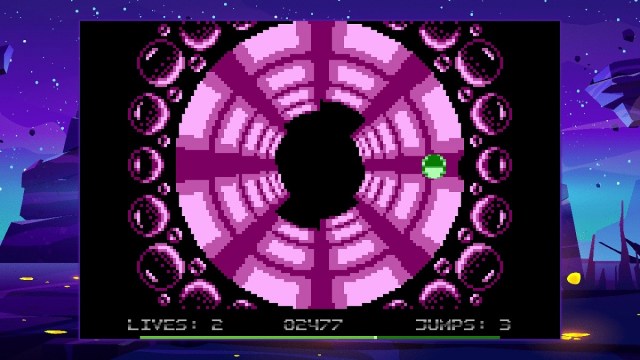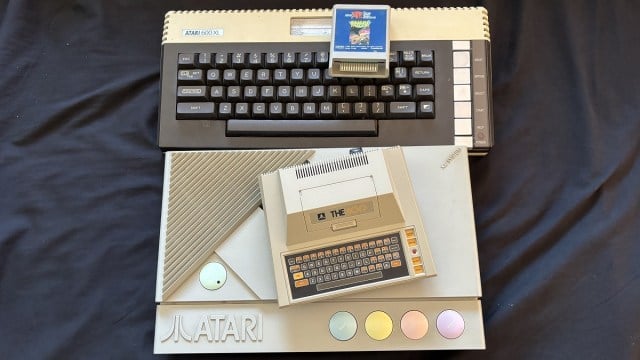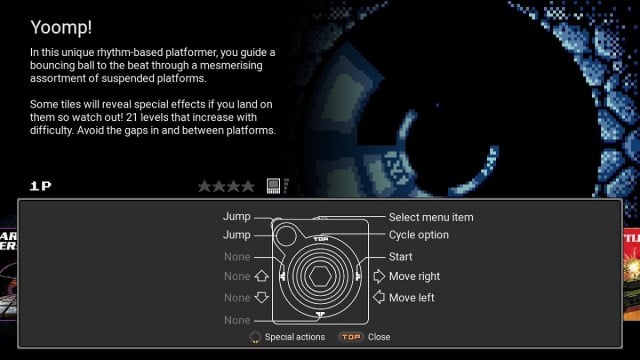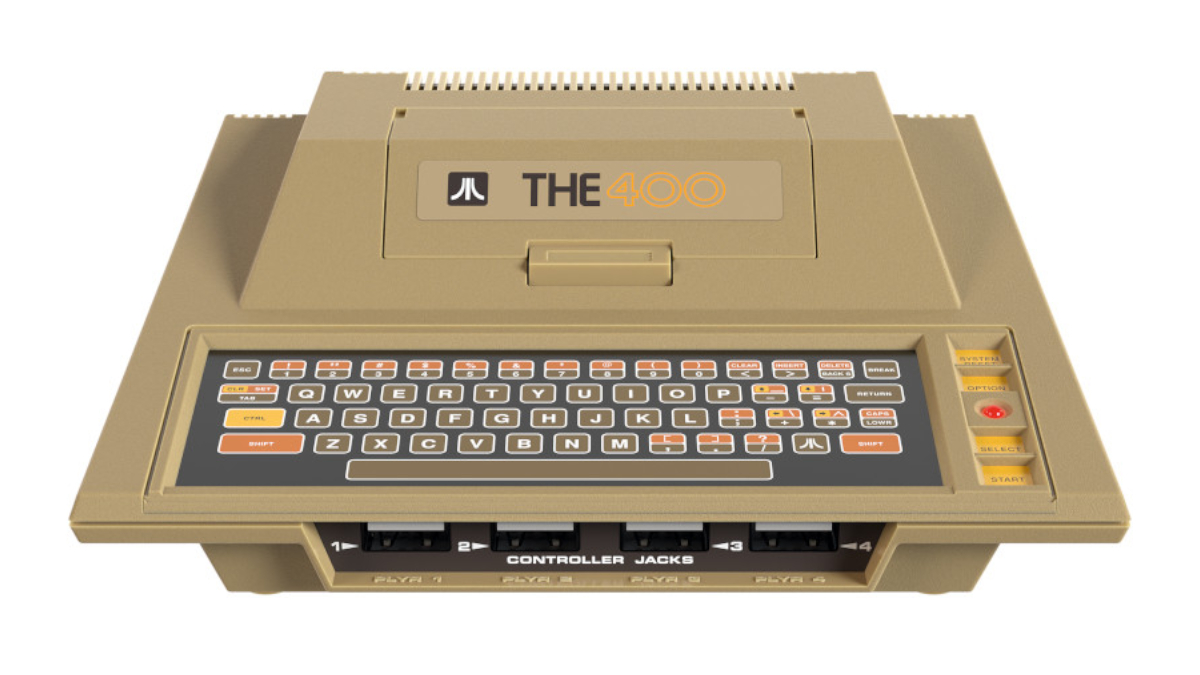I’m young enough that my first home computer was a standardized “Wintel” machine that ran Windows 3.1 and DOS. The early ‘80s home computer market is strange and mysterious territory to me, and these days, it’s a lot more difficult to get into them than consoles of the era.
It was only a few years ago that I got my hands on an Atari 600XL that was modified for more RAM and an Atari XEGS – a consolized Atari 8-Bit computer. But getting software for the things is hell. Retro game stores don’t often carry the games, and between cassette, floppy disk, and cartridge, it’s a rather difficult and expensive landscape.
So Retro Games’ THE400 Mini is an enticing concept for me. It gives a rather in-depth taste of the platform without having to hunt down cartridges and disks. However, while it’s friendly on the surface, it carries some of the original platforms’ un-intuitiveness.

On the surface, THE400 Mini is a plug-and-play version of the Atari 400 home computer, originally released in 1979. It includes 25 built-in games from across Atari’s 8-bit computer hardware. It also comes packaged with a modified version of Atari’s CX30 controller called THECXSTICK. The controller appears to be the classic one-button Atari staple, but has hidden buttons around the directional ring, one concealed on the corner, and two more at the top. This is to not only allow you to navigate the menus, but also allow games that didn’t just use a single button to function.
The UI is similar to Nintendo’s efforts on the NES and SNES Mini consoles. It’s a carousel, with a save function that has you drop your save state into a slot at the bottom of the screen. However, this is where things get a little more complicated.
Unlike consoles, home computers didn’t have standardized controls. As I mentioned, not every game used a single button. Often, they weren’t made with a single joystick in mind and required keyboard input. So, games might not tell you, “Press A to continue.” Instead, changing settings on a game might be bound to a key on the keyboard, and it won’t tell you which. So, Retro Games could only do their best, and before you boot into a game, it’s best to read the controls where they wrote out what button is bound to a function. And then you memorize that, which isn’t a massively tall order since the games are typically simple.
Some of them, anyway. There are quite a few games in the mix that desperately need to be partnered with their instruction manual, but that’s not built into THE400 Mini. However, the quick-start manual gives a link to the instruction manual, which gives a link to the individual game manuals. That works, and I’m not sure what a better solution would be aside from maybe a hefty physical guide covering everything. Like mapping controls, it’s kind of just the nature of the beast.

THE400 Mini’s unwieldiness will probably serve as an unwanted learning curve to anyone who just wants a taste of the games on the system. Anyone willing to put a modicum of effort into learning its eccentricities won’t have a problem.
However, if you want to get more complicated, THE400 Mini has some functions for the enthusiast. It will play just about any game from the 8-bit computer line-up, including 5,200 games. The box says that you need to legally obtain them, so I guess if you don’t want to break its trust, you can either dump your disks and cassettes or just play homebrew titles.
It’s done very intuitively. You simply need a USB drive, load on your various disk, cassette, or cartridge images, then plug it into the port on the back. The carousel will get an option for your USB device, which you can then browse the files and folders of. THE400 Mini then tries its best to map the controls, but since every game is different, it doesn’t always get it right.
Thankfully, you can map controls. It’s extremely fiddly since you need to map keys to specific buttons, but that’s not the hardware’s fault. If you can’t map the controllers to THECXSTICK, THE400 Mini works fine with a lot of USB controllers. I hate the CX30, so I plugged in my arcade stick and everything was gravy. You can also plug in a USB keyboard (the keyboard on the device is just for show) if you want to play something that requires one, such as Zork. Most keyboards, anyway. It doesn’t like my 8BitDo Retro Mechanical Keyboard, whether it’s through the 2.4g dongle or USB. I couldn’t tell you why, but the other keyboards I tested were fine.
Speaking of keyboards, plugging a USB drive into THE400 Mini loads it up with Atari BASIC, meaning you can write your own programs. I haven’t done it yet, but one of these days, I’m going to find a dusty old tutorial to run through.

If you’re not into tinkering, THE400 Mini is packed with some of the Atari 8-Bit computer line-up’s best games. While there are the obligatory Asteroids and Centipede, it also has Jeff Minters’ Hover Bovver and the incredible 2007 homebrew title, Yoomp. While it doesn’t come with Ultima, Rescue on Fractalus, or Karateka, it’s not just a bunch of arcade ports. There’s a really good variety, and if you looked up a particular person’s “Best of the Atari 8-Bit” list, you’d probably find a few of these games on it.
The question that often gets asked about machines such as this is along the lines of “Why not just build a RetroPie,” and there isn’t a really great answer to that. Aesthetics would be the primary one. Not having to build a RetroPie might be another. It’s not FPGA-powered, so there isn’t necessarily a hardware advantage.
For me, I like focused devices. I like my dedicated boxes, they give me clarity. Fresh from the package, THE400 Mini comes with enough potential for tinkering that I’m quite happy with it. It’s made me reassess getting THEC64 Mini (Commodore 64) or THEA500 Mini (Amiga). If you’re interested or nostalgic and you don’t mind a bit of a learning curve, you might feel the same way. Just make sure to bring your curiosity.














Published: Mar 28, 2024 03:54 pm